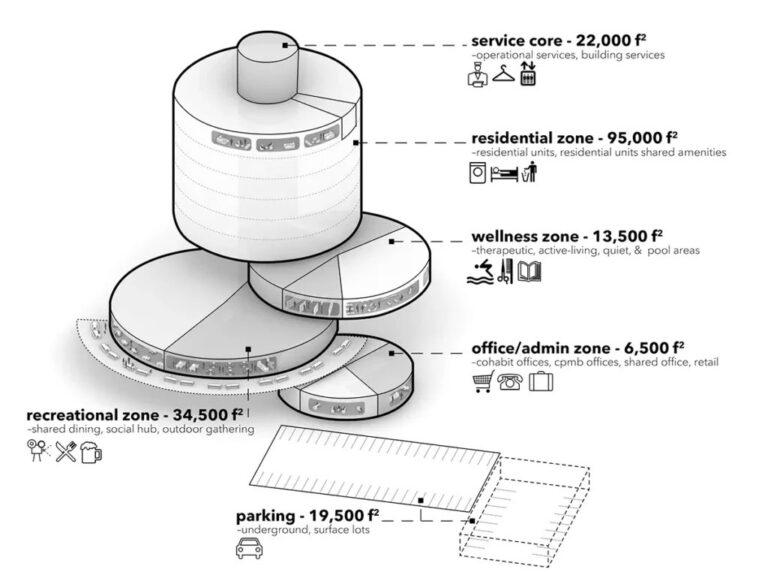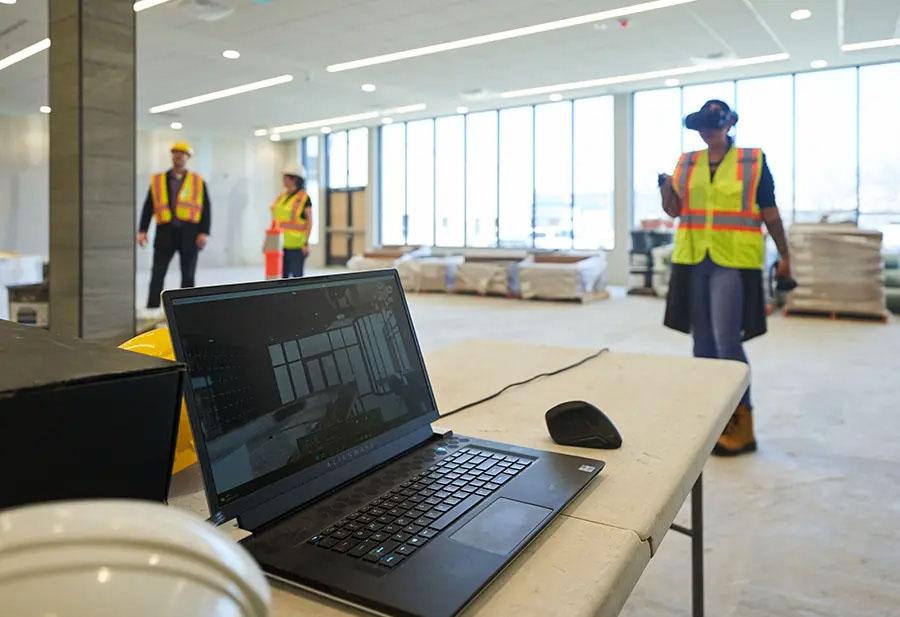Accessibility in architecture is a critical aspect that affects the quality of life of all individuals regardless of their physical, sensory, or cognitive abilities. It is important to design buildings and spaces that are accessible to everyone, including people with disabilities, seniors, and those with limited mobility. Disabilities, may they be visible or invisible, impact a large portion of the population. f-BLOK strives to include accessibility best practices in all of our projects.
Designing accessible spaces means creating environments that enable everyone to move through and interact with buildings and public spaces independently, comfortably, and safely. Inaccessible environments pose significant challenges to individuals with disabilities, including barriers to entry, circulation, and egress. The lack of accessibility can prevent people from participating in daily activities, such as work, school, and social events. f-BLOK often collaborates with lived-experience user groups to ensure that the solutions being provided remain functional.

There are several reasons why designing accessible spaces is important in architecture:
- They promote inclusivity: accessible design creates an environment where everyone, regardless of their physical or cognitive abilities, can feel welcomed and included. It ensures that individuals with disabilities have the same opportunities and experiences as everyone else, promoting a more equitable society.
- They provide safety: An accessible building or public space ensures that everyone can navigate through it safely. Accessible designs take into account potential hazards, such as uneven surfaces or obstacles in pathways, and create solutions that minimize risks for all individuals.
- They enhance user experience: Designing accessible spaces can improve the experience for all users, not just those with disabilities. For example, ramps and wider doorways can make it easier for people with strollers, bicycles, or heavy luggage to move through buildings and public spaces.
- They support sustainability: Designing accessible spaces can also contribute to sustainability efforts. For example, installing energy-efficient elevators and escalators can reduce energy consumption and lower carbon emissions. Accessible designs can also reduce the need for building modifications, which can result in significant financial and environmental costs.

Designing accessible spaces in architecture is not only the right thing to do, but it also has significant benefits for individuals, society, and the environment. Architects should prioritize accessibility in their designs and work closely with individuals with disabilities, as well as accessibility experts to create environments that are safe, inclusive, and welcoming for everyone. Reach out to us for a conversation on our thoughts about accessibility, how you can make your current space more accessible, and why this is important.






